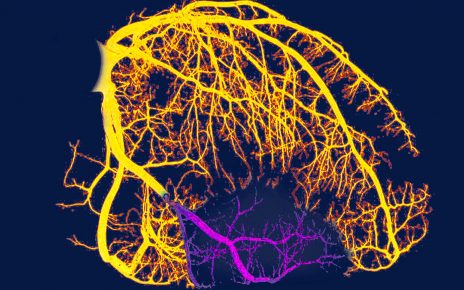In 1975 psychiatrist Robert Stoller of the University of California, Los Angeles, wrote something bizarre in his textbook on sex and gender. He asserted that people who were assumed to be boys when they were born but whose gender identity or expression did not match that assumption “often have pretty faces, with fine hair, lovely complexions, graceful movements, and—especially—big, piercing, liquid eyes.” Based on this observation, he suggested a theoretical model in which transgender girls become transgender because they are especially cute. Society treats them more like girls, he reasoned, and because of this experience, they start to identify as female.
As a physician-scientist, I’m generally of the opinion that knowledge leads to progress. But studies focused on this particular question—those asking what determines someone’s gender identity—have led us down some strange and dangerous paths. Researchers in this area appear to be in search of some objective truth, but the science is rooted in a subjective assumption: that we need to know what makes someone transgender so that they can be “fixed.” As a result, scientists have relentlessly pursued such questions, launching studies that promoted ideas that could hurt transgender children and their families.
Stoller’s observations motivated many of the psychological theories behind what makes people transgender. In 1993 a group of researchers at the Clarke Institute of Psychiatry in Toronto set out to test his hypothesis that beauty and what was then called “gender identity disorder” were linked. They recruited 17 birth-assigned boys with the diagnosis and 17 birth-assigned boys without it, all around the age of eight. The researchers then took headshots of the children and showed them to 36 college students. The students were asked to rate the youngsters’ physical appearance on a scale from one to five with categories such as “attractive,” “handsome” and “beautiful.” In the end, the college students found the children with “gender identity disorder” to be “prettier” than the cisgender boys. The findings seem to suggest Stoller was right: perhaps, because of their appearance, people treated the youngsters in the former group more like girls, and consequently, they became transgender. Though as the authors mention later in the paper, an equally plausible theory is that these children could have altered their appearance (long hair, et cetera) in ways that matched their identity, leading the college students to associate them with more feminine descriptions such as “pretty.”
A few years later, researchers revived this line of investigation, using the headshots of young birth-assigned girls with “gender identity disorder.” A group of college students again rated how “ugly” or “pretty” these children appeared, compared with cisgender girls. The children with “gender identity disorder” were rated as less beautiful, prompting the researchers to suggest that they may have been treated more like boys and thus identified as male. It seems more likely that these children simply cut their hair shorter, so the participants attached more masculine words to them. In the end, the study didn’t reveal much about what makes someone transgender, but it did promote an offensive theory with the potential to diminish the self-esteem of vulnerable transgender youth.
Researchers also studied the parents of such children. Psychiatry has long been enamored with the theory of mothers harming the development of their children (for example, the refrigerator mother theory posited that autism was caused by a lack of maternal warmth). These studies similarly asked if perhaps parents were to “blame” for their kids’ gender identity. In one paper, researchers assessed whether the mothers of children with “gender identity disorder” had more symptoms of either depression or a condition called borderline personality disorder. They found these mothers had more symptoms of both. Sounds convincing, right? Children must become transgender because their mothers are mentally ill.
What the researchers failed to discuss was that the mothers’ symptoms could easily have been caused by the way society treated their children. The subscale of borderline personality disorder that was higher among them was “interpersonal conflict.” You don’t need to be the parent of a transgender child to imagine that raising your kid in an unaccepting community could create substantial conflict.
In another study, researchers noted that parents of children with “gender identity disorder” did not place strong limits on stereotypically gender atypical behaviors such as birth-assigned boys playing with dolls or birth-assigned girls playing with blocks or transportation toys. Perhaps this was the cause of the “problem”? If these parents had simply cracked down on this behavior early on—ripped the Barbie out of their toddler’s hands, say—they may have prevented it, the authors posited. The more likely explanation is that it’s difficult to take a doll away from a child who desperately wants to play with it. And that doing so makes them sad and impacts their self-esteem.
In each case, researchers were hyperfocused on finding a problem with either the kids or their parents. But in the end, these scientists failed to establish one. They seemed less interested in a vital reframing: perhaps the issue was not the children’s identity but the way society treated them. Instead of supporting these kids, the researchers labeled them unattractive or painted their parents as mentally unstable.
These theories on the origins of gender identity have only added to the misguided, and increasingly illegal, calls for “therapies” designed to make transgender people cisgender. The logic of so-called gender identity conversion therapy is that if the environment is the cause, then we can simply alter the environment to nip things in the bud. Most of the “conversion” manuals have not been released to the public, but in 2002 a psychologist at Columbia University published “Gender Identity Disorder in Young Boys: A Parent and Peer-Based Protocol,” which included parenting techniques such as “letting go of [the] boy by [the] mother,” forcing the child to play with same-sex friends, and removing the youngster from stereotypically gender-atypical activities such as gymnastics or ballet. Notably, a recent study my colleagues and I conducted showed that attempts to change a child’s gender identity from transgender to cisgender are associated with greater odds of attempting suicide. Several U.S. states have banned conversion therapy, but in much of the U.S., these practices continue.
Similar research into the psychological causes of transgender identity continues even today. A physician at Brown University recently conducted an anonymous survey of respondents recruited via Web sites for parents who believe peer pressure and online influences have made their children transgender. The survey essentially asked the parents if they thought the Internet made their children trans, and the parents, not surprisingly, given that they were visiting Web sites about this idea, answered yes. Conservative media latched onto the study, suggesting that transgender children are really just confused kids tricked into being transgender after reading something on Reddit. The implication is that we need to take these kids away from supportive online LGBTQ communities so that they can be made cisgender again. Reading through this literature, we need to ask ourselves some questions: What is the reason for this research? What does it hope to accomplish? The tireless search reveals a thinly veiled dogma: that being transgender is a pathology to be fixed. This belief not only harms transgender people but also undermines good science.
What good science shows us is that when we accept transgender people, they thrive. Instead of trying to figure out what went “wrong,” we should be investing our time and energy into advocating for nondiscrimination laws, increasing access to health care and raising transgender voices in the media, so society realizes that they are vital members of our communities. Maybe Stoller was right when he noted that those children were exceptional. It’s time we celebrate that and move on.



